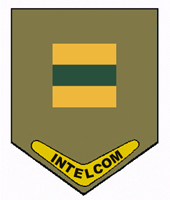FD COM – OTHER FORCES
by A. Gubler
Introduction
The Australian military maintains
extensive peacekeeping forces across known space. These formations and
units fall under command of ADF – Peacekeeping Forces a four star formation
on level with Earth,
Narrative
I will never forget the way Anzac Day dawned on
the shores of the
The Tiger Battalion, or the 5th Battalion (ANZAC),
Regular Australian Regiment to the uninitiated, had marched through
the 19 hour night to carry out a dawn assault on the Toyoda Foundation’s
facility on the outskirts of Tosashimizu city. The alien Kafers had
been entrenched there since their March landing and had to all reports
converted the complex into a “CH*!!” or safe-place. We were going to
prove them just how unsafe it was…
The Raven Brigade’s artillery was laying down light but effective fires on the identified Kafer
bug holes. Reportedly the Germans had dropped an orbital nuke on the
Kafer “CH*!!” over at Halbinsel. The nuke hadn’t done much damage to the subjoian facility but the Kafers where so riled they had all
stayed smart for weeks. Plenty of German Heimatshützen
and British Gurkhas had died taking out that “CH*!!”.
The Kafers had to know something was coming as
we had the Jap militia moving nosily up the main road from Tosa
plus the artillery fire. We were just hoping they wouldn’t notice us
moving up a shallow river valley from
We went through a quick platoon evolution from
four “brick” patrol sections to assault formation. My command section
with just myself and my radio-operator, two fire support sections each
with two 9-mm machineguns and Command Candidate Leader Chen’s assault
section with six rifleman. Chen’s section took the lead with a sire support
section on each flank and my group with the pioneers and the assault
guns up back.
The ground was the typical Joian heavy grass,
up to three meters high as we moved towards the Todaya’s
out buildings which were cloaked in dust from the barrage. A strange
looking reptile with soulful eyes, a big skull and even bigger hands
popped out of the grass in front of where my section was advancing.
It certainly didn’t look Kafer but we were so surprised I’m sure no
one would have shot it even if it did. I guess it was one of those strange
moments that happen before battle as I stood crouched amongst the grass
with an alien goanna that looked like it was about to give us a philosophy
lecture. Later we were to give the creature the name Quintus and it
almost became a part of our platoon.
Suddenly Quintus the alien reptile freaked out
with a lot of chitering and tried to scramble
down a burrow hole of some sort. Taking that as a sign I snapped a “go
to ground” order to my platoon. No sooner had we hit the dirt than a
spray of Kafer 27-mm grenades blasted across our line of advance. The
Kafers had indeed noticed out flanking advance, later we were to learn
that preparatory artillery fire just got them excited and made them
smart and a smart Kafer is to smart by far. I was lucky but Chen and
the assault section out in front weren’t as they withered in the crossfire.
Before I could respond a Tri-Beamer burst of three
28-MW plasma bolts exploded right around me. I was sprayed by burning
grass and dirt and my Taipan was ripped from my hands,
we never found where it landed. Jones my radioman went down with plasma
burning through his vest and legs. It took me a few seconds or minutes
to gather my wits. Bit by bit I put the platoon together and with the
pioneers and the Emus we went forward paying dearly for every metre. It was to be a long day ahead of us and at the going down of the sun
we shall remember them.
Extract from “Tales of
the Tiger and the Raven Part II: No Joi” by Chief Leader Anton Balin, Ares Military Press, 2304
50th (Defence) Brigade
Treaty
of
Treaty
of Asunción Mandate Force
Treaty
of Fremantle Mandate Force
Fifth
Treaty of Versaille Mandate Force
Treaty
of
Commonwealth
Expeditionary Force
5th (Armoured) Brigade
13th (Assault) Brigade
Most international peacekeeping forces
are formed on a needs basis, usually mandated during treaty negations
that end conflicts.
The 50th Brigade is the oldest permanent peacekeeping formation in the Australian order of battle. The brigade is based at a purpose built training facility at ADB Southbank on the Llano de Tierra Negra. Squadrons and Battalions rotate into the brigade for a six month long training session before being deployed to a peacekeeping mission. Similarly companies from the Corps of Engineers, Operations and Aviation will serve in the brigade units before moving en masse to relieve other specialist troops.
24th Squadron,
Tank Regiment of Australia
57th Squadron, Armour Regiment of New Canberra
98th Battalion, New Canberra Light Infantry
73rd Battalion, Eastern Shore Regiment
Brigade
Engineer Unit 50, Corps of Engineers
Brigade Operations Unit 50, Corps of Operations
Brigade Aviation Unit 50, Corps of Aviation
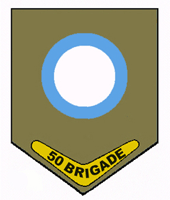
The Hyderabad Neutrality Protection
Force is not a peacekeeping formation but a peace-enforcing command.
The force was deployed to assist the newly independent nation of
65th (Infantry) Brigade
The 65th Brigade headquarters is located
in Secunderabad,
9th Battalion,
Commando Regiment of Australia
5th Battalion, Australian Rifles
143rd Battalion, Sikh Regiment of Australia
145th Battalion, Sikh Regiment of Australia
Brigade Engineer Unit 65, Corps of Engineers
Brigade Operations Unit 65, Corps of Operations
Brigade Aviation Unit 65, Corps of Aviation
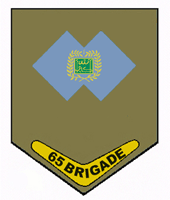
Treaty
of
The Treaty of Singapore was negotiated as precursor to an outbreak of violence. Based on the Chyuantii-Lihgtou border, Syuhlahm in the Zeta Tucanae system The Australian armoured hovertank squadron is mandated with keeping the Cantonese and Mandarin Chinese communities apart and in dissuading the minor communal violence that has broken out from time to time on this distant world. This unit also provides a neutral force in the Chinese Arm of space able to intervene to settle disputes.
26th Squadron, New
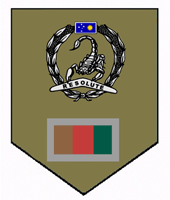
Treaty
of Asunción Mandate Force
At the end of the 3rd Rio-Plato War
between
9th Battalion, Regular Australian Regiment
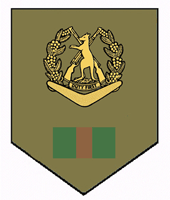
Treaty
of Fremantle Mandate Force
The Treaty of Fremantle was the epic
cease-fire negotiations to the Central Asian War between
71st (Defence) Brigade
Located at the border city of
11th Squadron,
Tank Regiment of Australia
52nd Squadron, New Canberra Guides
8th Battalion, Commando Regiment of Australia
5th Battalion, Wundurra Regiment
Brigade
Engineer Unit 71, Corps of Engineers
Brigade Operations Unit 71, Corps of Operations
Brigade Aviation Unit 71, Corps of Aviation
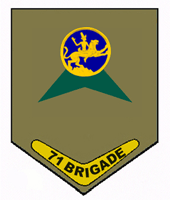
72nd (Defence) Brigade
Located in the Kyrgyz/Tien
Mountains the brigade watches the most porous part of the DMZ including
the infamous
50th (Tracked) Squadron, Armour Regiment of New Canberra
8th Battalion, Regular Australian Regiment
9th Battalion, Parachute Regiment of Australia
44th Battalion, Australian Rifles
Brigade Engineer Unit 72, Corps of Engineers
Brigade Operations Unit 72, Corps of Operations
Brigade Aviation Unit 72, Corps of Aviation
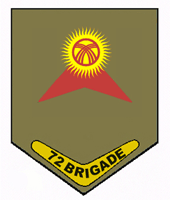
Fifth
Treaty of Versaille Mandate Force
The Fifth Treaty of Versailles negotiated
the peace between the newly re-united
75th (Infantry) Brigade
The 75th Brigade headquarters is located
in
20th Battalion,
New
31st Battalion,
4th Battalion, Commando Regiment of
Brigade
Engineer Unit 75, Corps of Engineers
Brigade Operations Unit 75, Corps of Operations
Brigade Aviation Unit 75, Corps of Aviation
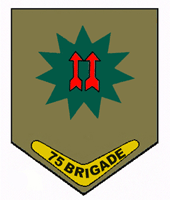
Treaty
of
Based at Newmark,
Alderhorst in the Vogelheim star system, 92-RTN
is the main Australian contribution to the Treaty of Darwin Mandate
Force and is entrusted with keeping the peace between the local French
and German communities. However due to the Kafer invasion the Darwin
Mandate Force has an uncertain future, the alien threat has been an
enormous boost to reconciliation between the two communities originally
in dispute. In fact the peacekeeping force during the invasion was reorganised
as a mobile brigade to fight the Kafers off-world. Currently the balance
of the 92nd Battalion is training for conventional operations against
the Kafers on Alderhorst, while two companies
(including a
92nd Battalion, Regiminto
de la Tierra Negra
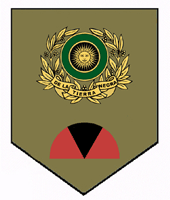
Commonwealth Expeditionary Force
CEF HQ is based at Heorot on Beowulf in the Queen Alice’s Star system. The HQ is, like the CEF, a joint effort mixed between planetary and space forces and the many Commonwealth and allied nations. But like the CEF the British Army and the Royal Space Navy dominate. The Australian ground forces commitment to CEF is an armoured hovercraft brigade, an orbital assault brigade, a unit of close air support bombers and undisclosed special operations forces.
Strike
Aviation Unit 133, Corps of Aviation
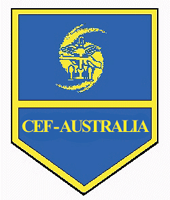
The Devil-Tank Brigade is an
armoured hovercraft formation from the 1st Division attached to the
CEF on Beowulf in the Queen Alice’s Star (DM +46 1797) system. As part
of the British IV (Alician) Corps the 5th Brigade has an important defence
role on Beowulf, the site of the furthest penetration of the Kafer invasion
forces. The brigade was based in ADB
33rd Battery,
Regiment of Australian Artillery
9th Squadron, Tank Regiment of Australia
15th Squadron, Tank Regiment of Australia
6th Squadron, New South Wales Mounted Rifles
45th Squadron, New Canberra Guides
Brigade Engineer Unit 5, Corps of Engineers
Brigade Operations Unit 5, Corps of Operations
Brigade Aviation Unit 5, Corps of Aviation
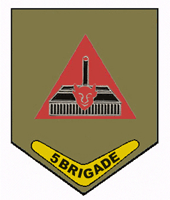
The Lightning Brigade is the
crack Australian field contingent of the CEF. It is an orbital assault
formation with a formidable array of heavy equipment, including hover
tanks and combat walkers available to back up its lander borne parachute
infantry. The brigade is the FD COM component of the specialist orbital
assault 31st (Assault) Division. The 31st is a joint division comprising
formations from Field and Fleet Commands as well as support forces.
The brigade saw limited action at Kimanjano (DM + 34 2342) but was fully
blooded on Beta Canum Venaticorum, especially
in the
104th Battery,
Regiment of Australian Artillery
54th Squadron, Armour Regiment of New Canberra
4th (Assault) Battalion, Australian Rifles
1st Battalion, Parachute Regiment of Australia
4th Battalion, Parachute Regiment of Australia
Brigade Engineer Unit 13, Corps of Engineers
Brigade Operations Unit 13, Corps of Operations
Brigade Aviation Unit 13, Corps of Aviation
JSU, Special Air Service Regiment
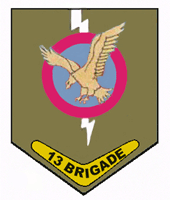
ZSU, Special Air Service Regiment
This unit of the Australian SAS is attached from the headquarters of FD COM to the High Command of the ADF. ZSU is considered the peak intervention unit of the SAS and is called on for a number of high-risk special assault missions across known space. ZSU operates closely with the stealthy long-range transports and the Search and Rescue Guards (SaRGies) of Air Force Command, the Australian Diving Squadron of Naval Command and the zero-G warfare troops of Space Force Command’s Australian Spacewalker Squadron. ZSU has also been identified operating in the Nuevas Malvinas area against armed separatist in close liaison with the New Canberra Police’s Special Mobile Unit “Fidel” and Australian Federal Police.
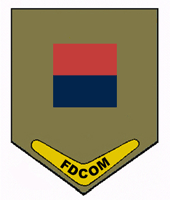
MSU, Special Air Service Regiment
This unit of the Australian SAS is attached to Intelligence Command of the ADF. They provide elite and secret units to carry out special intelligence gathering missions across the breadth of Australian operational areas. There are believed to be three distinct company-sized groups within “M” Special Unit trained and equipped for urban, open bush (plains, light forest, deserts) and close bush (jungle, mountains) operations respectively.
